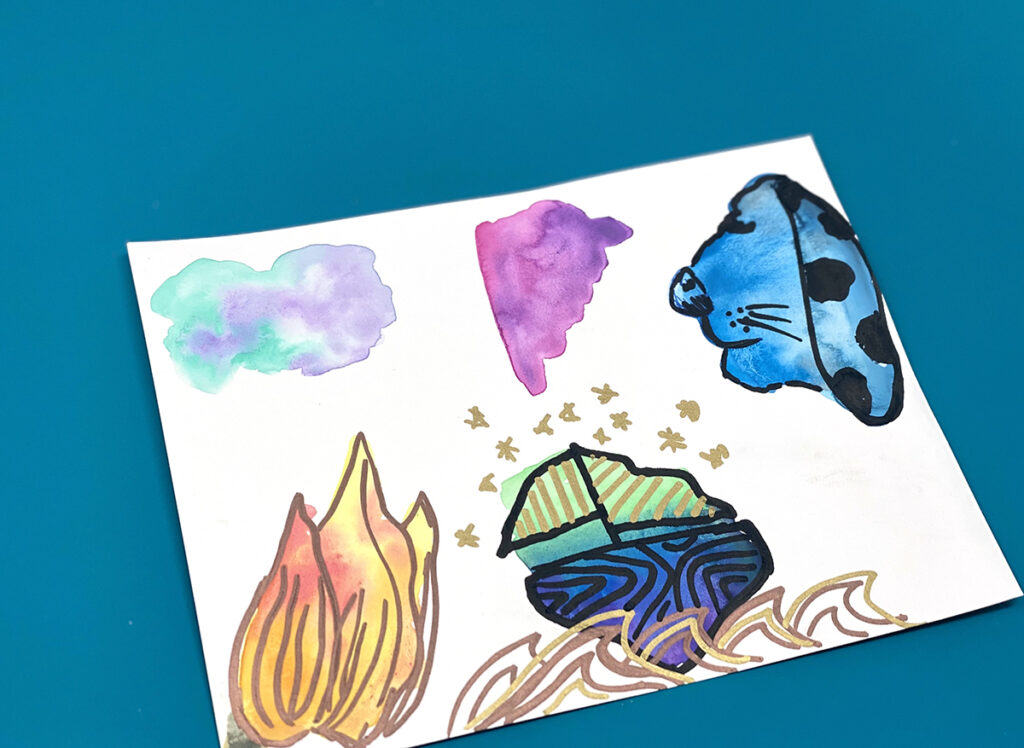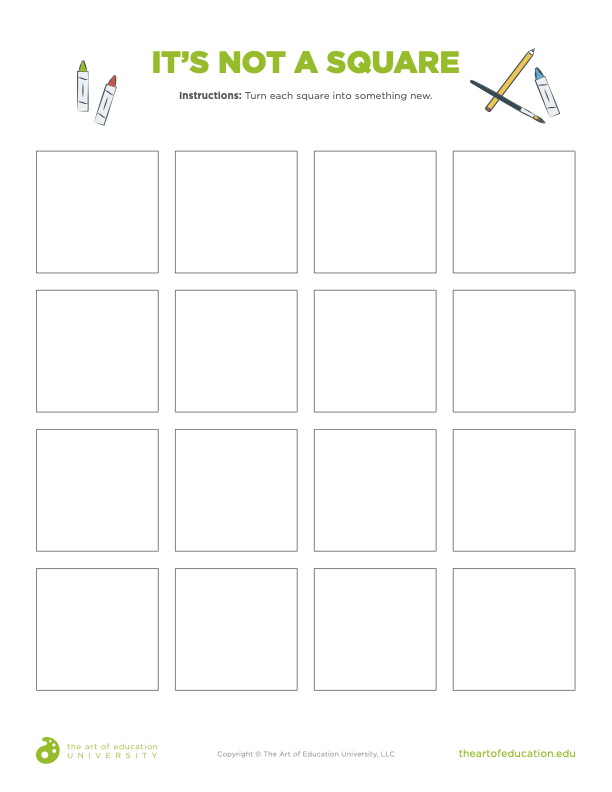The beginning of the new school year brings a lot of energy, excitement, and change. We know the first days of school are important because they set the stage for the rest of the year. Art teachers want to create an inclusive environment where students can thrive, feel safe, and have their creativity be fostered. How can you cultivate this environment from day one? One way to do this is by encouraging and expecting participation.
Participation in the art classroom comes in various forms. It’s not just raising a hand to answer a question. Participation also includes how students involve themselves in the classroom and learning activities. Students can be active or passive participants. An active participant will be eager to raise their hand, share their opinion, get involved in the discussion, or jump right into a classroom activity. A passive participant will learn by listening, taking notes, drawing, or sitting quietly. While there is nothing wrong with the way passive students learn, research shows that students who actively participate have more meaningful and longer-lasting learning experiences.
Encouraging students to participate takes planning and facilitation. As you look for ways to incorporate active participation from day one, check out these four ideas.
1. Practice Through Creative Exercises.
Creativity is a skill that, like any other, you must develop and improve upon. It’s not a switch that turns on or a trait you are born with. So let’s start nurturing this valuable skill by participating in creative routines. Here are two exercises to get you going.
Creative Watercolor Creatures

- On the first day of the activity, students explore different watercolor techniques by making marks on paper. This can be an opportunity to review watercolor routines or to practice new skills.
-
Students will leave the paper to dry for a day and then use drawing materials to turn the watercolor marks into new objects and creatures.
- Discuss the importance of a growth mindset. A student’s creativity grows when they are pushed to practice additional thinking in challenges like this one.
It’s Not a Square
- Students receive a handout with a series of squares or rectangles like the download below.

- Students turn each square into a new object that no one else in the class has thought of.
- Set a time limit for students to transform their squares.
- Students take turns naming their objects. If another student has the same object, the object gets crossed out. Students tally up points for objects not crossed out, one point per object. The student with the highest score “wins.”
2. Play the Icebreaker, “Who’s in the Art Room?”
You need to understand who your students are as individuals before they can feel like they are a part of the classroom community. When students can connect with others on the first day, it will help give them a sense of belonging. It will also show them that there are others in the class that share the same interests.
You can learn individual preferences, understand previous art experiences, and identify different personalities and learning styles by playing “Who’s in the Art Room?” Nick Gehl describes this game as “… a great opportunity for a student to see that whatever they’re thinking and feeling about being in the art room, someone else is probably having the same thought. And their previous insecurity can be more supported knowing they’re not the only one.”
3. Implement a Design Challenge.
We want our rooms to be a place where creativity can thrive. Students are itching to get into the art room because it’s a fun class with a world of possibilities to explore. You don’t want to stifle the creative potential of students—you want it to soar! One way to get your students actively participating is by solving a design challenge. Students can work individually or collaboratively. Design challenges are low in pressure and high in engagement. They are a perfect way to get your students to use their creative thinking skills.
If you don’t have prompts created, take advantage of these design challenge generators:
You can select the prompts or let students choose their own. To encourage active participation, allow students to share their completed work and interact with the work of their peers.
4. Introduce the “Clean Out the Cupboard” Art Challenge.
Do you have an abundance of one art material hiding in a closet or cupboard? It could be something that has sat there year after year because you couldn’t bring yourself to throw it away. Use this as a creative problem-solving opportunity for your students to collaborate on!

Let’s say you have a ton of colored sand that you have no idea what to do with. Here is an example of a challenge you can create that will not only use up your sand but also prioritize teamwork.
- Challenge the students to a sandcastle design contest.
- Divide students into groups and give them two popsicle sticks, two cups for molding, and an equal amount of damp sand.
- Set a time limit for students to construct.
- Provide different categories to give students guidance. Some category ideas could be the most detailed, decorative, tallest, or creative.
- Optional: Add a competitive element and allow students to vote on designs. To promote even more active participation, give each group a chance to “sell” their creation before voting.
You can implement a challenge like this with almost any material. As you start the school year, look around for materials you have been hanging onto but don’t need. You could also look into using free, recyclable materials like cardboard.
To create active participants, it is crucial to get students involved starting on day one. There are many methods that can work, such as engaging students in hands-on activities or having them communicate with group members to solve a challenge. As you encourage students’ efforts, they will begin to feel safe and continue to actively participate. Implement low-stakes, fun activities to set the tone for the rest of the school year. If students feel like their opinions, ideas, and voices matter right away, they will be more apt to participate throughout the school year. We hope that you try out some of these activities as you prepare to go back to school!
What are your favorite ways to encourage student participation?
How do you handle passive participants in the classroom?
Magazine articles and podcasts are opinions of professional education contributors and do not necessarily represent the position of the Art of Education University (AOEU) or its academic offerings. Contributors use terms in the way they are most often talked about in the scope of their educational experiences.






